
The Belém Palace, formally the National Palace of Belém,, is the current official residence of the President of the Portuguese Republic, the head of state of Portugal. Located in the Belém District of Lisbon, the palace's main façade fronts the Praça Afonso de Albuquerque, facing the Tagus River. A former residence of the Portuguese Royal Family, the Belém Palace complex is made up of various buildings, wings, courtyards, and gardens, built variously from the 18th to 21st centuries.

Ribeira Grande is a municipality in the northern part of the island of São Miguel in the Portuguese Azores. The population in 2011 was 32,112, in an area of 180.15 km². The municipal seat is located in the civil parish of Matriz, with a population of about 4000 inhabitants, part of the urbanized core of what is commonly referred to as the city of Ribeira Grande.

Belém is a freguesia and district of Lisbon, the capital of Portugal. Belém is located in western Lisbon, to the west of Ajuda and Alcântara and directly east of Lisbon's border with Oeiras. Belém is famous as a museum district, as the home of many of the most notable monuments of Lisbon and Portugal alike, such as the Belém Tower, the Jerónimos Monastery, the Padrão dos Descobrimentos, and Belém Palace. The population in 2011 was 16,528.
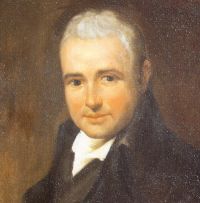
Domingos António de Sequeira was a famous Portuguese painter at the Royal Court of King John VI of Portugal.

Cartacho

Alcântara is a freguesia and district of Lisbon, the capital of Portugal. Located in western Lisbon, Alcântara is to the east of Ajuda and Belém and west of Estrela and Campo de Ourique. Alcântara had a population in 2011 of 13,943.

Ajuda is a freguesia and district of Lisbon, the capital of Portugal. Ajuda is located in western Lisbon, northeast of Belém and west of Alcântara. The population in 2011 was 15,617.

The Palace of Ajuda is a neoclassical monument in the civil parish of Ajuda in the city of Lisbon, central Portugal. Built on the site of a temporary wooden building constructed to house the Royal family after the 1755 earthquake and tsunami, it was originally begun by architect Manuel Caetano de Sousa, who planned a late Baroque-Rococo building. Later, it was entrusted to José da Costa e Silva and Francisco Xavier Fabri, who planned a magnificent building in the modern neoclassical style.

Ribeira Palace was the main residence of the Kings of Portugal, in Lisbon, for around 250 years. Its construction was ordered by King Manuel I of Portugal when he found the Royal Alcáçova of São Jorge unsuitable. The palace complex underwent numerous reconstructions and reconfigurations from the original Manueline design, ending with its final Mannerist and Baroque form.

The Praça do Comércio is located in the city of Lisbon, Portugal. Situated near the Tagus river, the square is still commonly known as Terreiro do Paço, because it was the location of the Paços da Ribeira until it was destroyed by the great 1755 Lisbon earthquake. After the earthquake, the square was completely remodeled as part of the rebuilding of the Pombaline Downtown, ordered by Sebastião José de Carvalho e Melo, 1st Marquis of Pombal, who was the Minister of the Kingdom of Portugal from 1750 to 1777, during the reign of Dom José I, King of Portugal.
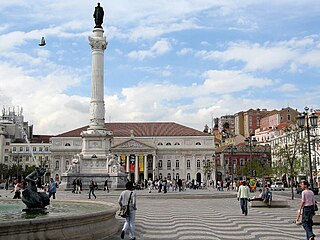
The Rossio is the popular name of the King Pedro IV Square in the city of Lisbon, in Portugal. It is located in the Pombaline Downtown of Lisbon and has been one of its main squares since the Middle Ages. It has been the setting of popular revolts and celebrations, bullfights and executions, and is now a preferred meeting place of Lisbon natives and tourists alike.

Portuguese architecture refers to both the architecture of present-day Portugal's territory in Continental Portugal, the Azores and Madeira, as well as the architectural heritage/patrimony of Portuguese architects and styles throughout the world, particularly in countries formerly part of the Portuguese Empire.

The Pombaline style was a Portuguese architectural style of the 18th century, named after Sebastião José de Carvalho e Melo, the first Marquês de Pombal, who was instrumental in reconstructing Lisbon after the earthquake of 1755. Pombal supervised the plans drawn up by the military engineers Manuel da Maia, Eugénio dos Santos and Elias Sebastian Pope. The new city was laid out on a grid plan with roads and pavements fixed at 40 ft wide (12 m). The previously standing royal palace was replaced with the Praça do Comércio which along with square Rossio defines the limits of the new city. Maia and Santos also outlined the form of the facades that were to line the streets, conceived on a hierarchical scheme whereby detail and size were delineated by the importance of the street. These were in a notably restrained neoclassical style partly the result of limited funds and the urgency of building but also thanks to the enlightenment concept of architectural rationality adhered to by Pombal. A standardized system of decoration was applied both inside and out with a distinctively reduced application of azulejo tiling.

The Bemposta Palace, also known as the Paço da Rainha, is a neoclassical palace in the area of Bemposta, now the civil parish of Pena, in Lisbon. It was originally built for Queen Dowager Catherine of Braganza on her return from London to Lisbon and served for many years as her residence. It was then transferred to the Casa do Infantado, before becoming the residence of John VI of Portugal until his death. After Queen Maria II of Portugal transferred its title to the Army, it became the Portuguese Military Academy.

The Palace of the Counts of Penafiel, commonly known as Penafiel Palace, is a Portuguese palace located in the civil parish of Santa Maria Maior, in the municipality of Lisbon. It serves as the global headquarters of the Community of Portuguese Language Countries, also known as the Lusophone Commonwealth.
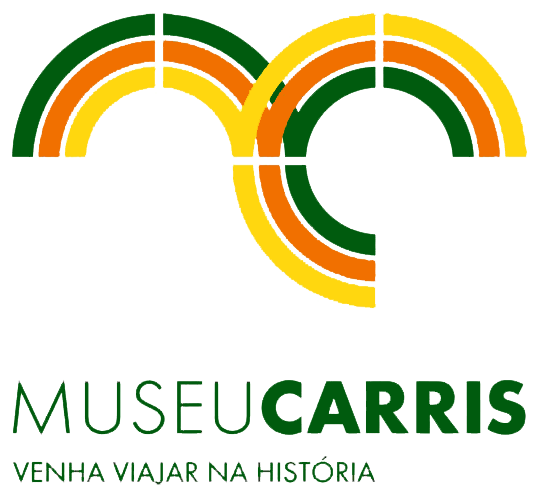
The CARRIS Museum is a museum that is open to the public and showcases the history of public transport in Lisbon. It is situated in the civil parish of Alcântara, municipality of Lisbon.
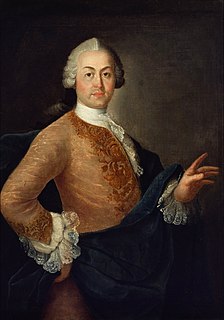
Carlos Mardel was a Hungarian-Portuguese military officer, engineer, and architect. Mardel is primarily remembered for his role in the reconstruction effort after the 1755 Lisbon earthquake.
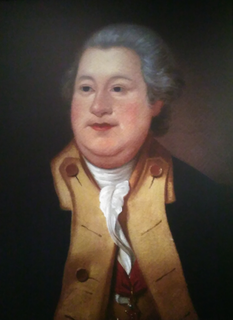
Manuel da Maia was a Portuguese architect, engineer, and archivist. Maia is primarily remembered for his leadership in the reconstruction efforts following the 1755 Lisbon earthquake, alongside Eugénio dos Santos and Carlos Mardel.

The Project for the Royal Palace and Patriarchal Cathedral of Lisbon by Italian architect Filippo Juvarra was an ambitious proposal for a monumental complex located along the Tagus river in Lisbon, projected to house both a royal palace of King John V of Portugal and a new cathedral for the Patriarch of Lisbon. Juvarra planned the palace in 1719 for the modern-day Lapa neighborhood, though the works were never realized.

The Belenzada was an attempted coup in November 1836 by Queen Maria II of Portugal and her husband Ferdinand II to remove the liberal government established by the September Revolution and reinstate the Constitutional Charter of 1826. Despite enjoying diplomatic support from the United Kingdom and Belgium, the attempt was frustrated by the determination of the National Guard, the regular army and the general population of Lisbon.























